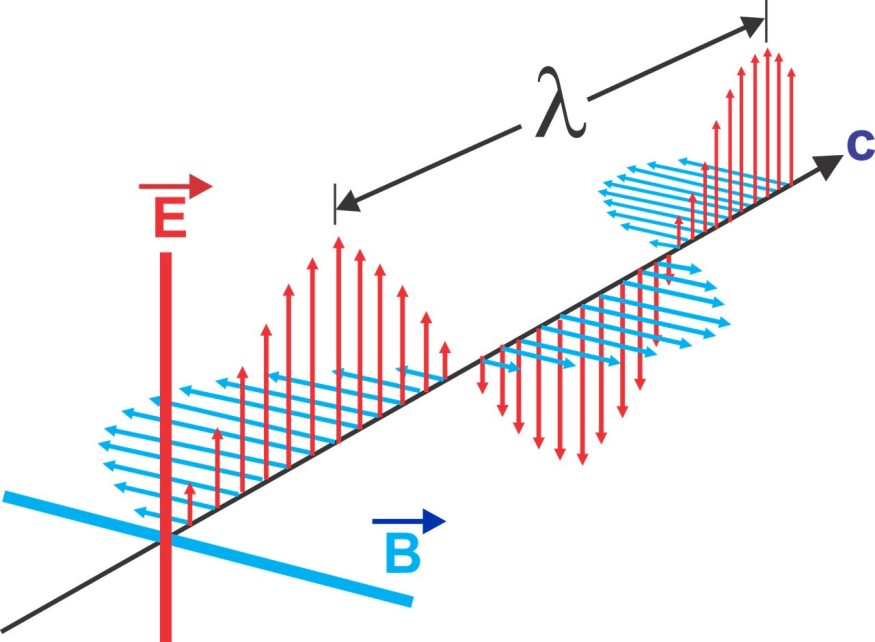Most of the time, a reflection requires no explanation. The collision of light with the surface of the mirror is almost natural, with its rays setting on a new journey across space with the same ease as a ball bouncing off a wall.
For more than six decades, scientists have speculated on the prospect of witnessing a time reflection. Researchers describe a ground-breaking experiment in which they saw time reflections of electromagnetic signals in a customized metamaterial.

Search for Time Reflections
Researchers from the City University of New York's Advanced Science Research Center (CUNY ASRC) have finally turned theory into practice with the first experimental evidence of manipulation time reflections across the electromagnetic spectrum.
Andrea Alù, a physicist and founding director of the CUNY ASRC Photonics Initiative, said in the press release via EurekAlert! that it has been exciting to see time reflections in real life because it has been so long since the phenomenon was predicted and how different time-reflected waves behave than space-reflected ones.
Notions of TARDIS-like technology were also theorized to change history, but this type of time reflection is stranger. More so, it appears that it is doable after all.
During the 1970s, a study showed that it was obvious that the temporal component of a quantum wave of light had an analog for spatial reflection. When the medium through which a wave is passing swiftly and precisely is altered, the temporal component of the wave will change with it.
As per Science Alert, the effect of this temporal reflection will not rip a hole in reality. But, it will change the frequency of the wave in ways that technology can use in domains as diverse as photography, analog computing, and optical filtering.
Surprisingly, the 'echo' of changed frequency is actually a signal reversal. If it was an echo of a voice, each number could be heard being pronounced backwards, from one to 10, in a chipmunk squeak.
There have previously been experiments with equivalents in acoustics and magnetism, as well as a limited exploration of narrow frequencies in electromagnetic temporal reflection using a computer system.
Investigating the phenomena on a less limited level would necessitate uniform and abrupt fluctuations over a material's whole electromagnetic field, which would take too much energy to make work.
Groundbreaking Experiment Enabled Scientists To Observe Time Reflections
When the recent groundbreaking experiment described in the study, titled "Observation of Temporal Reflection and Broadband Frequency Translation at Photonic Time Interfaces" and published in Nature Physics, the scientists were able to observe time reflections.
As Alù said in the press release, they were able to realize the conditions to change the properties of the material in time both abruptly and with a large contrast using a sophisticated metamaterial design.
The researchers beamed a variety of frequencies via a specially built metal strip of about 6 meters long that was equipped with switches and capacitors, Science Alert reports.
The capacitors emptied their charge at the same time, rapidly changing the impedance of the metamaterial as the signal traveled through. Metamaterials do not have any equivalent in the natural world as they are designed with unique properties for a specific purpose so they suit different structural, acoustic, and optical needs.
The shocking shift caused an echo in a wide spectrum of light waves, displaying a reflection in their temporal features. Researchers noted that finding a metamaterial that can demonstrate time reflection provides a whole new tool for engineering in manipulating light.
Shixiong Yin, a physicist and one of the study's lead authors, said that the exotic electromagnetic properties of metamaterial have been engineered in smart ways. The experiment shows that it is possible to add time interfaces into the mix and extend the degrees of freedom to manipulate electromagnetic waves.
RELATED ARTICLE: Metamaterials Made Simpler With Kirigami for Modular, Reconfigurable 3D Structures
Check out more news and information on Physics and Math in Science Times.
© 2025 ScienceTimes.com All rights reserved. Do not reproduce without permission. The window to the world of Science Times.












